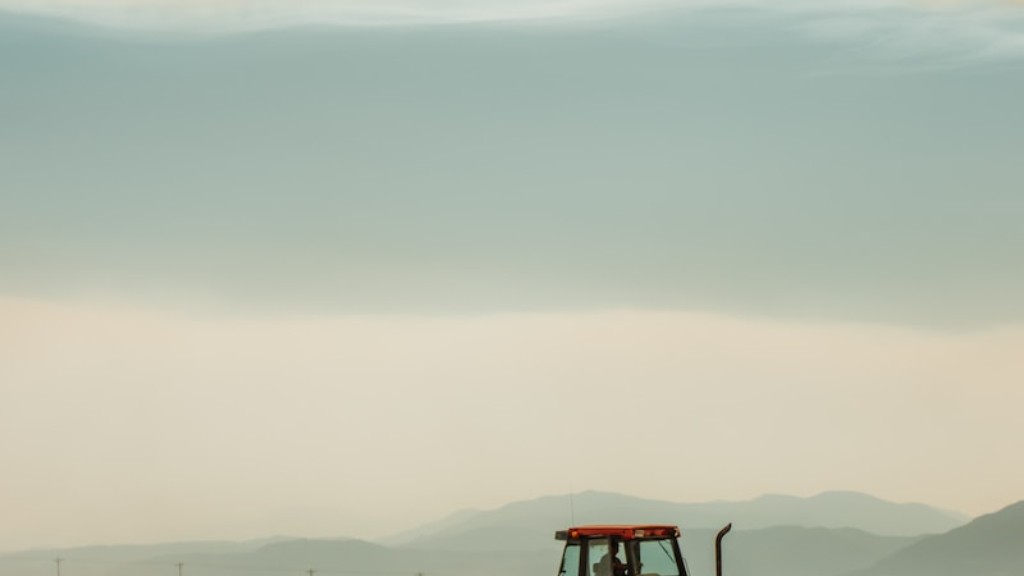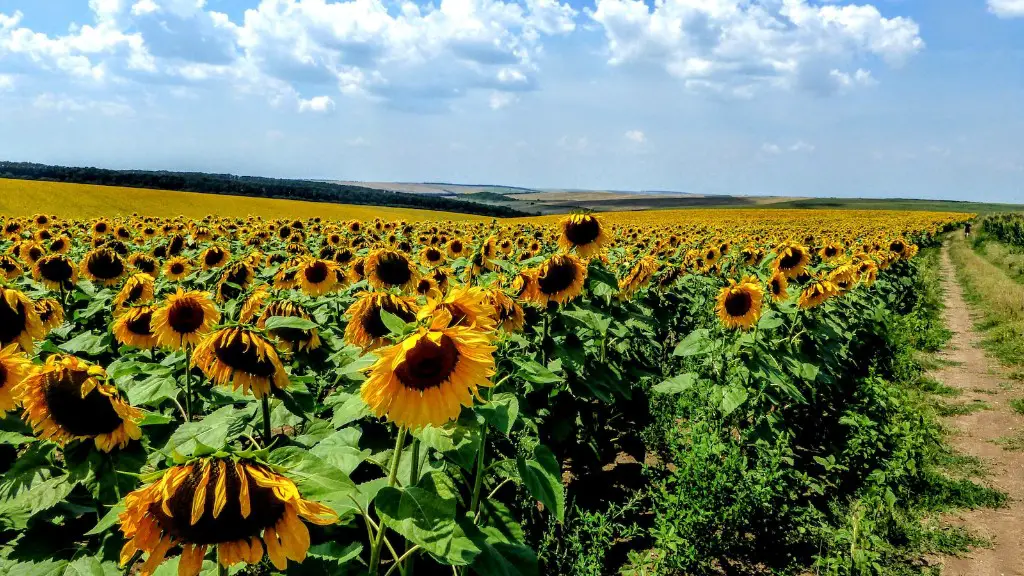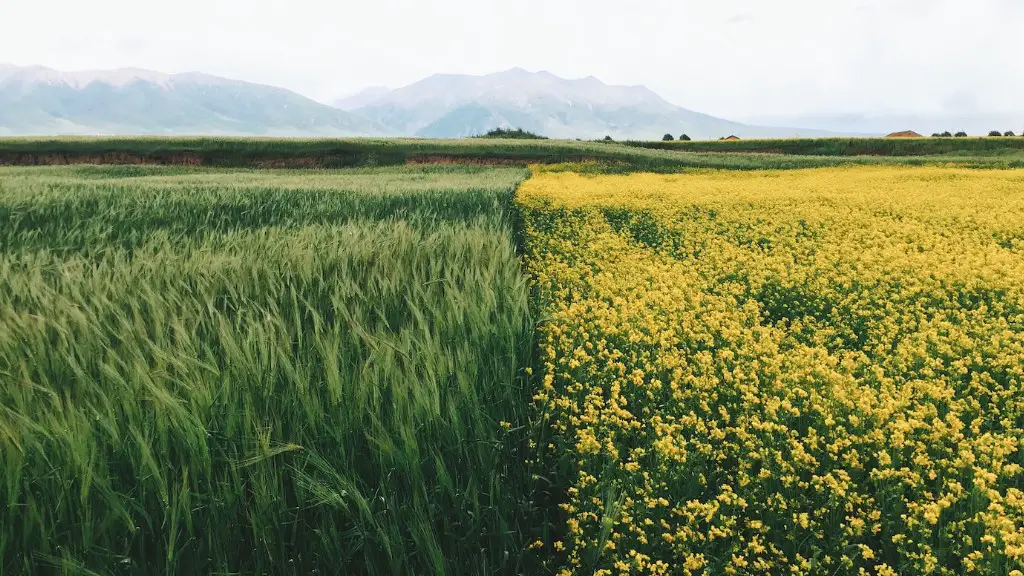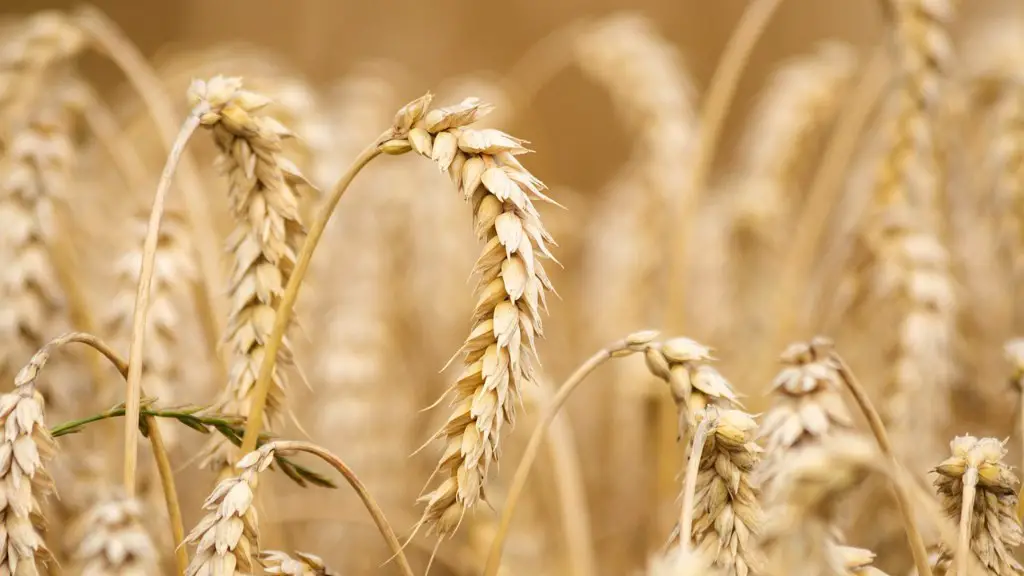It is no secret that climate change greatly impacts agriculture. Many small-scale farmers and agriculturalists have already seen the effects of extreme weather on their crops and pastures, from droughts, to heavy flooding to other unpredictable weather patterns. But climate change has much more far-reaching effects on agriculture than just extreme weather. Understanding these effects and the ways to combat them is critical in order to improve crop yield and safeguard agricultural livelihoods.
The most immediate impact of climate change on agriculture is crop yield. In warmer climates, crops are much more susceptible to disease, pests and weeds, which can competition for moisture and nutrients in the soil. Furthermore, rising temperatures can lead to increased moisture evaporation, reducing the amount of water available to crops and pastures. These factors combined can cause a sudden drop in crop yield, even in traditional farming systems adapted to the local climate.
Changes in weather patterns, such as more severe droughts, floods and storms will have an ever-increasing effect on crop yield and soil health. Droughts can lead to a decrease in water availability and an increased risk of waterlogging and soil erosion. Excessive flooding can lead to soil contamination and nutrient loss, increasing the amount of time and resources farmers need to repair their fields. Storms can lead to significant damage to agricultural infrastructure, such as irrigation systems, storage facilities, and greenhouses, worsening the effects of extreme weather.
Increasing atmospheric carbon dioxide (CO2) concentrations are also impacting agriculture. Plants take in CO2 and convert it into sugar and oxygen, a process known as photosynthesis. However, higher concentrations of CO2 can reduce the amount of nutrients, water and sunlight that plants need to grow. As a result, crop yields can be significantly reduced, and soil health can also be diminished.
Climate change has also created new and more frequent pests that can wreak havoc on agricultural systems. Many insect pests, for example, are more temperature-sensitive and reproduce faster in warmer climates, meaning that farmers must contend with insect pests much more often. Additionally, any pest that was previously able to survive extreme weather can become even more successful in a warmer, more unpredictable climate.
Finally, climate change is having an impact on agricultural labor difficulty. As temperatures rise, people are less able to work outside in the fields due to fatigue and heat exhaustion, making it even more difficult to manage and maintain the agricultural system. This can put a strain on the resources and labor of farmers and also increases the cost of production, which must be taken into consideration when assessing the long-term impacts of climate change on agriculture.
Liability for Climate Change-Related Losses
Climate change poses a significant risk to agricultural systems due to the many ways in which it can affect the environment, from changes in weather patterns to rising temperatures, increased carbon dioxide concentrations, and more frequent pests. In light of this, it is important for governments and other entities to consider the potential for climate change-related losses and damage to crops, livestock and/or production systems.
Under international law, countries are obligated to provide compensation for climate change-related losses and damage. This includes both direct losses, such as damage to crops or livestock, and indirect losses, such as increased labor costs or reduced crop yields. Under these provisions, countries may be held liable for climate change-related losses and damage, either through the Domestic Law of the State or through International Humanitarian Law.
In addition, it is important that governments, businesses, and other actors incorporate “risk transfer” mechanisms into their operations and/or policies. Under risk transfer mechanisms, the “risk” of potential climate change-related losses and damages is transferred from the vulnerable entity (e.g. farmer or producer) to a third-party (e.g. insurer). In doing so, the vulnerable entity is provided with protection against the consequences of climate change, ensuring that any losses and damages related to climate change are mitigated.
It is also important for governments, businesses, and other actors to develop risk management strategies designed to reduce the likelihood and/or impact of climate change-related losses and damages. These strategies could include better water management plans, improved infrastructure design, access to insurance, and more stringent regulations. All of these strategies should be tailored to address local and regional needs, with an emphasis on protecting the most vulnerable sectors of society.
Adaptation and Mitigation Strategies
Adaptation and mitigation strategies are two important pathways for managing climate change-related losses and damage in the agricultural sector. These strategies can involve both long-term and short-term initiatives, with the goal of increasing the resilience of agricultural systems to climate change.
One long-term mitigation strategy is the adoption of climate resilient farming practices. Climate resilient farming practices typically involve the use of sustainable agricultural technologies, such as drip irrigation and integrated pest management. These technologies can help reduce the risk of crop failure due to extreme weather, diseases, and pests, improving crop yield and soil health in the long-term.
In addition, it is important for farmers to diversify their crops. Diversification can help reduce the risk of crop failure due to extreme weather, pests, and other environmental factors. By diversifying their crops, farmers can reduce their reliance on a single crop and increase their chances of a successful harvest, even if one crop fails.
An important adaptation strategy is the development of agroforestry systems. Agroforestry involves the planting of trees on agricultural land to provide shade, reduce soil erosion, and improve soil fertility. By providing an additional layer of protection to agriculture, agroforestry can help reduce the risk of climate change-related losses and damage.
Finally, farmers can also adopt new and innovative farming techniques. For example, climate-smart agriculture, which includes a range of techniques such as conservation agriculture and agroecology, can help farmers adapt to a changing climate by reducing their dependence on fossil fuels, increasing the use of renewable energy, and conserving natural resources.
Economic Impacts
Climate change can result in significant economic losses for agricultural systems due to reduced crop yields, increased labor costs, and other environmental disruptions. These impacts can then have a ripple effect on the wider economy, as those employed in the agricultural sector may lose their jobs or face reduced wages.
Climate change can also affect the prices of food and other agricultural products. Extreme weather or other climate-related disasters can reduce crop yields and cause shortages, leading to reduced availability and higher prices. Similarly, increasing temperatures can reduce water availability and dry up pastures, resulting in more expensive livestock products. These costs can then be passed on to the consumer, leading to higher prices and a higher cost of living.
In addition, climate change can also impact agricultural exports. As weather patterns become more unpredictable and extreme, farmers may find it difficult to export their products due to reduced crop yields, increased labor costs and other environmental disruptions. This can have a significant impact on the export trade, as many countries rely heavily on agricultural products for economic growth.
Finally, climate change can also lead to rising insurance costs for farmers. As extreme weather and other climate-related events become more frequent, farmers will find it increasingly difficult to obtain insurance coverage without paying higher premiums. Rising insurance costs can then put a strain on farmers’ resources, as they may not be able to afford the cost of insurance.
Conclusion
The impacts of climate change on agriculture are far-reaching and could have devastating consequences for agricultural systems and livelihoods globally. Understanding how climate change impacts agriculture and implementing adaptation and mitigation strategies to address these impacts is critical to preserving crop yields, protecting livelihoods, and keeping agricultural systems viable in the long-term.




